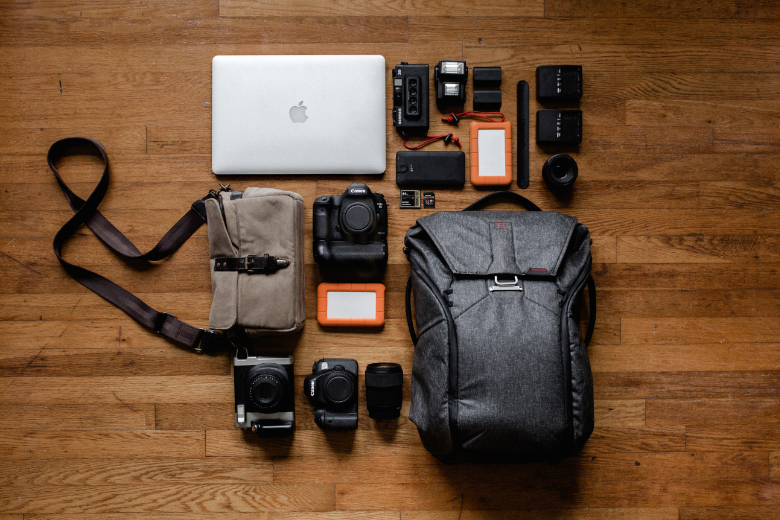Photography is both a very enjoyable hobby and an exciting job. The only thing you need to start out as a shooter is a camera. But as a photographer gets better at what they do, they need more tools, gear, and extras to improve the quality of their photos.
When you decide to get serious about photography, there are a few key tools that every serious hobbyist or professional needs. These accessories not only make the photos better, but they also keep the tools safe. Photography is fun, but you have to pay to do it. A lot of high-end equipment costs a lot of money, so after your initial investment, you’ll want to make sure you get accessories and things that will last you a long time, keeping them safe and in working order.
We’re going to look at seven things that every shooter should have for their camera. You should keep these items in your regular photography toolkit, whether to protect your gear or make your job easy.
Sticks (tripods and monopods)
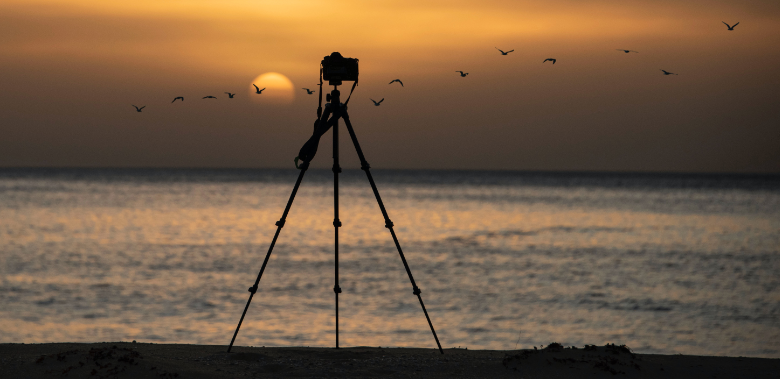
Sometimes you need a little help to get the best shot. Both posed and unposed pictures show this. If you shoot for hours straight, your hands might get shaky, so you’ll need to use post-production or stability settings. You can also spend money on a good camera. Tripods make your photos look much better and are one of the most important tools for any shooter, whether they are an amateur or a pro. The most important things about a tripod are its weight, how long it lasts, how it can be changed, and how it is used.
If you plan to move a lot with your gear, you will want a tripod that is small and easy to carry. Hiking to a remote spot to get the perfect shot can be very satisfying, but hiking with a ton of extra stuff on your back can be a drag. Tripods can be made of plastic, metal, or carbon fiber, among other things.
Durability is also an important thing to think about. Tripods made of carbon fiber or plastic are lighter than those made of metal, but they don’t last as long. Even though it’s important to be careful with equipment, accidents can happen in the field, and it wouldn’t be sensible to keep replacing broken gear.
Lastly, think about your photography skill and how often you use it. You don’t have to buy an expensive brand if all you want is a nice tripod for family trips. Tripods or monopods that are the size of a table will work well. But these are usually not upgradable, and the top of the camera head is usually not removed.
Heads for tripods and quick connections
Tripod Heads
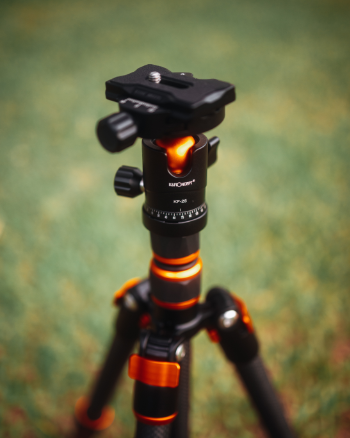
Now that you’ve found the right tripod, it’s time to think about the part that goes on top of the tripod and holds your camera. Most low-end tripods don’t have heads that can be switched out, but most other tripods can be changed to fit your needs.There are many kinds, but the most popular ones are the ball head, the 3-way pan head, and the gimbal head. Most of them can also come with quick connects that make it easy to put your camera on and take it off. No matter what kind of head you have, it’s important to make sure that all of your quick links are the same so that everything works together.
That’s exactly what a ball tripod head is. It is held together by a ball that can move in any direction. This gives you a lot of options, and you can set up shots quickly by just turning the ball connection. The only bad thing about it is that it is not as accurate as some of the other heads.
The 3-way pan head lets photographers move their camera along two different directions. This lets them direct the camera exactly where they want it to look. It is one of the most accurate types of tripod heads and is great for work that needs to be exact.
The rotating head is the last part. These are stabilizers that keep your camera steady no matter how much the base changes. For example, if you are taking a picture on the deck of a ship or somewhere else with shaky ground, the gimbal head will smooth out the movement and let you take stable, smooth pictures.
Camera Bags
When setting up an outdoor shoot, it’s important for photographers to have a safe way to get their gear to the spot. Large production companies may have access to safe cases like Pelican, but these are not the most portable. Most shooters who work on-site need a good camera bag. But because there are so many choices, it can be hard to choose just one. When looking for a good camera bag, there are a few important things to keep in mind.
Comfort is very important for photographers, who often have to carry their gear on their shoulders for long stretches of time. The bag must be easy to carry and spread the weight out properly. Also, the bag needs to be big enough to hold all of the necessary things. The most convenient choice is to use a bag made just for camera equipment. These bags have secure, divided sections that keep things safe while traveling. Even though regular packs or backpacks can be used, there are also camera equipment inserts that offer more safety. Water resistance is another important thing to think about. Since not all cameras can handle water, it’s smart to choose a waterproof bag to keep your gear safe from sudden rainstorms.
The Incase DSLR Pro Pack is a good choice for a specialized camera bag. It has places for cameras that are easy to get to and is small enough to carry all the important things. Duluth Packs are some of the most durable basic backpacks on the market. These handmade backpacks are very sturdy and come with a promise that they will last a lifetime.
Camera Clips
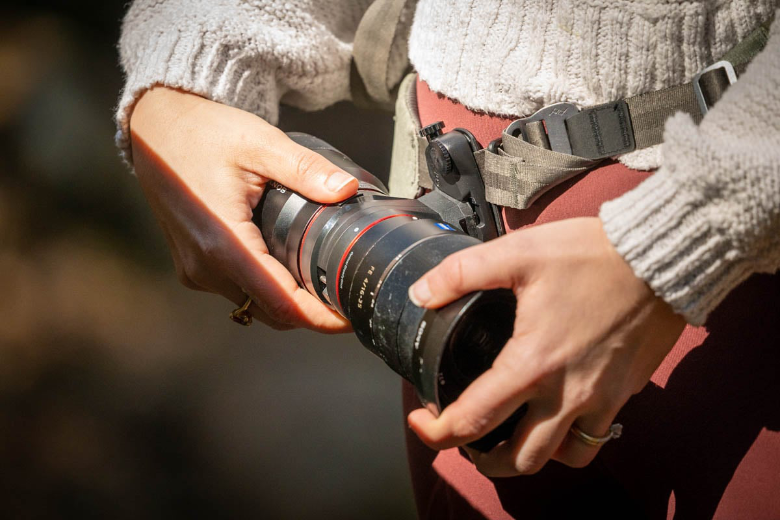
The camera clip, or ideally several clips, is one of the most important parts of a camera. Camera clips use the same quick-connect devices that are used to attach your camera to the base of a tripod, but they can be used with any camera. This function makes traveling and moving around a lot easier, especially for photographers who use more than one camera.
Camera clips can be put in almost any place. You can connect your camera to the shoulder strap of your backpack to keep it safe and easy to get to while keeping your hands free. This way is much better than using a neck strap because it keeps the camera from swinging around and hitting things. There are also perks to the different ways to attach a belt. There are special links for people who want to use neck straps or lanyards.
By making all of your camera links the same and letting you choose where they go, you can easily free up your hands on the job. This can save your camera when you’re trying to take pictures while moving, and it can also save your back by letting you hold your equipment in comfortable poses while on site. The Peak Design Capture system is one of the most flexible choices. It lets you clip your camera to almost any strap or surface.
Charging Hubs

Photographers’ worst nightmare is having their batteries die in the middle of a shoot, which is why they need a reliable charging device. Even though a surge blocker can charge everything at once, it is hard to use and inefficient when you are on the go. Since photography equipment often needs special batteries, charging hubs made just for shooters have been made. These hubs can be changed to charge the different kinds of batteries your gear needs. When choosing a charging system, make sure it works with all of your gear, can charge quickly, and can be taken with you.
Before rushing out to buy a charging hub, you should first look at your tools to figure out what you need. Buying a high-end system that doesn’t work with your other gear is a waste of money. Next, think about how fast it charges. A lot of general chargers say they can charge any device, but they might not say how fast. The most important thing is to have a system that can charge quickly or at least not too slowly. You don’t want to have to schedule times to charge every other day.
Lastly, think about how big the charging system is. If it will stay in one place at home, size doesn’t matter as much. But for photographers who travel a lot, it’s best to have a small system that is easy to pack and doesn’t take up much room.
Stabilizers or Gimbals
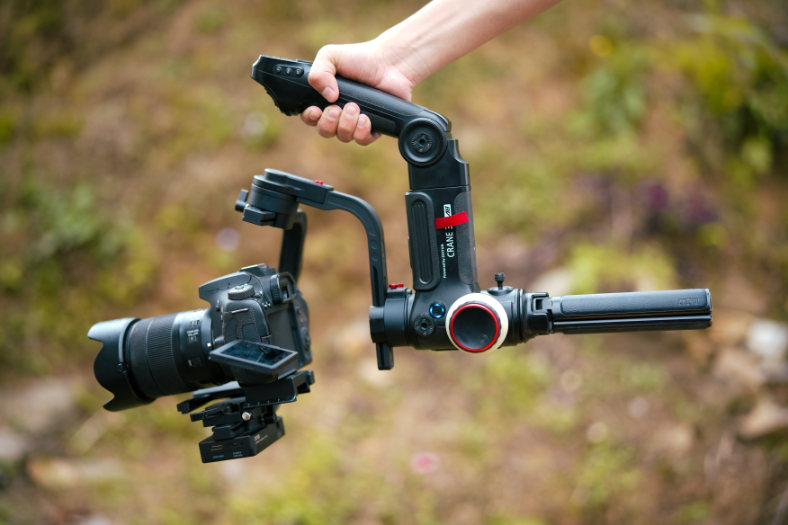
We’ve already talked about gimbal tripod heads, but if you want to get the most out of them, you’ll also need a handheld gimbal stabilization for taking action shots. Gimbals use a gyroscope to counterbalance the weight of the camera and keep the lens steady, even when the camera moves. The built-in gyroscope is one of the best camera devices you can buy because it lets you take smooth photos and shots that move with you. These accessories are mostly used for film, but photographers can also use them. When buying a gimbal, you should think about its size, price, sturdiness, and ability to be used in different ways.
The size of your camera and the size of the gimbal are both important things to think about. A lot of gimbals are made specifically for camera phones and can’t be used with DSLR cameras. Make sure that the sizes and links of your camera and gimbal work together.
When you look at how things connect, you may find that your gimbal can also work as a tripod head. Even though it’s handy, not all cameras and tripods are compatible with it. If you want to use it as a tripod head, make sure your camera and tripod have the right connections.
Lastly, gimbals are usually more expensive than other add-ons. If you are on a budget, think about the products and how long they will last. If the gyroscope is out of place or broken, the gimbal is pretty much useless.
Cleaning Gear
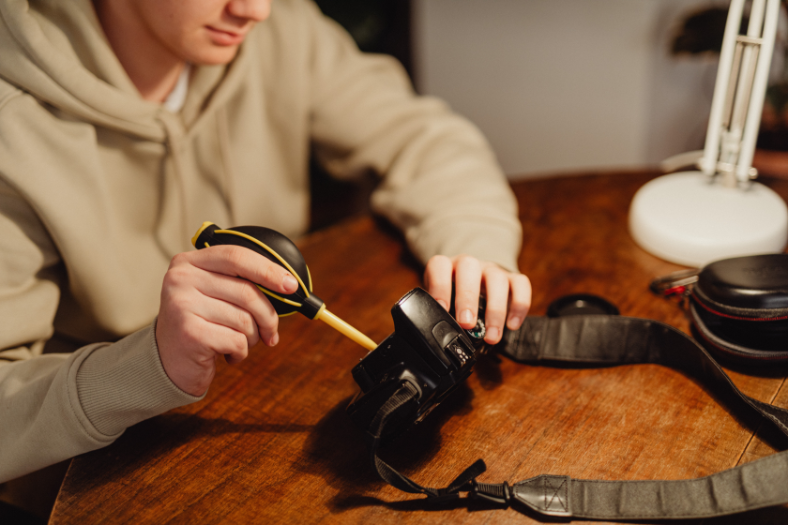
In most hobbies and jobs, like photography, it’s important to clean and take care of your gear. Changing lenses and working outside can let dirt or other particles into your camera. This can ruin your gear and make you waste all the money you spent on it.
Using a simple lens fan to clean your camera’s lenses can make your ca
mera last a lot longer. With a hand pump, for example, you can blow air into your camera’s tiny cracks to get rid of dust. This is a very useful tool when you change lenses. The Rocket Blaster is a famous hand pump that costs less than $20. Every photographer should have one of these.
Electronic accessories are available for people who want to update their cleaning tools. Electronic air fans like the BB2 from Nitecore produce filtered, high-pressure air and are more efficient and effective than hand pumps. Instead of physically pumping air into a small balloon, you just press a button to release a burst of air that blows away dust and other particles.
But this ease of use comes at a price. Electronic blowers are very efficient, but they are also specialized accessories that cost more. It’s important to keep your tools in good shape by using cleaning supplies, but you can also do it with a hand pump if you work hard enough. In the end, your income and a cost-benefit analysis will determine whether you should upgrade to an electronic blower or keep using a hand pump.




